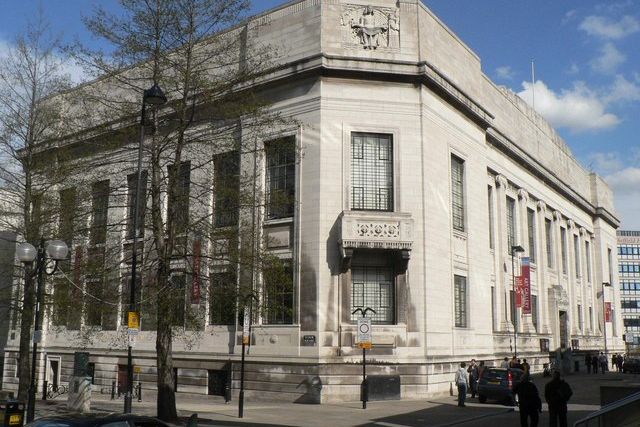Exhibition 'Gallery V: A century of change' in Graves Gallery
The gallery is split into four sections:
Striking a Pose: People in 20th century art
The way in which artists have represented people has changed throughout history. During the 20th century, growing importance was placed on the role of the individual and this was reflected in the art of the time. In many portraits the character and personality of the sitter became particularly significant. These qualities were often explored through colour, composition, pose and gesture rather than the recognised symbols frequently used in earlier centuries.
From Dawn till Dusk: Everyday life in the late 19th and 20th century
From the late 19th century onwards new technologies were developed, such as electric lighting, telephones, cars and buses. Towns and cities were transformed and artists increasingly focused on aspects of ordinary life. This concern with the everyday was explored in different ways throughout the 20th century. Some artists specifically focused on people going about their daily lives. They showed them involved in everyday activities at home, at work, and at leisure.
Conflict: War and unrest in the 20th century
During the 20th century Europe experienced may profound changes. Two world wars and many other conflicts had a dramatic impact on both life and art. Some artists embraced the machinery and technologies of this new age. They initially used art to glorify the idea of war, but became disillusioned by the devastation and destruction it caused.
A Sense of Place: Landscape in the 20th century
During the 20th century, artists began looking at the landscape and the environment that surrounded them in different ways. Building upon the ideas of the Impressionists and Post-Impressionists, they tried to capture the spirit of a place and explore their personal connection with it. Throughout this period the British landscape changed physically, showing the scars of war and the rapid growth of towns and cities. Many artists reacted to these changes by creating images of the landscape which explored a sense of national identity, often idealising the countryside. The relationship between the individual and the landscape became increasingly important throughout the 20th century.
